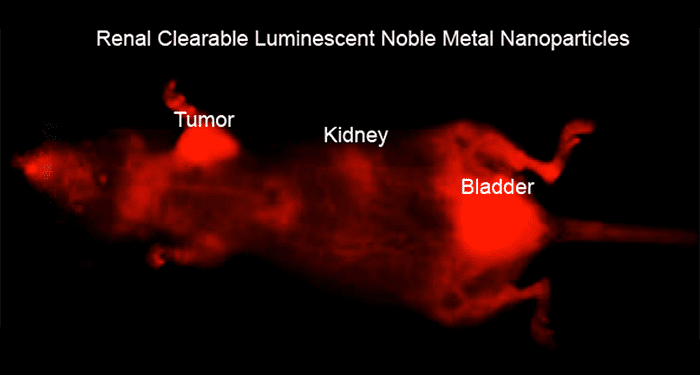Minimizing nonspecific accumulation of nanomedicines in the body is key to their future successes in clinical practices. In particular, for nondegradable inorganic nanoparticles (NPs) that have demonstrated broad medical applications in the preclinical setting, they are often sequestered by the reticuloendothelial system (such as liver and spleen) and are retained in the body for a long period of time. Potential health hazards have been a roadblock for their clinical applications in disease diagnosis and therapy. Therefore, developing nanomedicines that can selectively target diseases but can be rapidly eliminated from normal tissues and organs is highly desired.
During the past six years, J. Zheng and co-workers at the University of Texas at Dallas have developed a class of ultrasmall noble metal NPs that not only exhibit tunable luminescence but can also be effectively eliminated via the renal system with extremely low systemic accumulation. In a review in WIREs Nanomedicine and Nanobiotechnology, they summarized the synthetic strategies for creating different colored luminescent metal NPs, discussed unique size-independent emissions of thiolated metal nanoparticles, and the key factors such as size, surface ligands, and density that governed renal clearance and tumor targeting of these ultrasmall noble metal NPs. Furthermore, they also demonstrated their unique strengths in broad biomedical applications ranging from simple labeling of small insulin to early cancer detection as well as noninvasive fluorescence-kidney functional imaging that has not been achieved with conventional fluorophores.
These promising results clearly indicate that renal clearable nanoparticles exhibit significantly different in vivo behaviors compared to conventional small organic fluorophores or non-renal clearable engineered NPs. Therefore, many challenges in disease diagnosis and therapy that conventional nanomedicine are encountering might be addressed with renal clearable nanomedicines in the future.

















